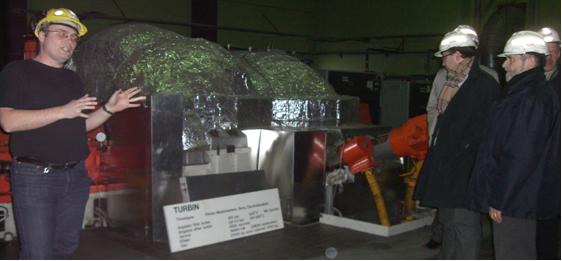Biomass plants and Växjö's climate strategy, Sweden
The training session was given by Henrik Johansson who is in charge of climate planning and documentation for the city of Växjö. Växjö has been acclaimed the ”greenest city in Europe” by ICLEI and BBC and is now using this for promoting their work internally and externally.
The environmental issues have been very important for Växjö since the end of the 60’s. In the 80’s the firsts steps towards a fossil fuel free community were taken, when the energy company started to replace oil with biomass in district heating. In 1996, a unanimous political decision was taken that Växjö will be a Fossil Fuel Free municipality (meaning the whole geographical area) by 2030. The fossil fuel free concept is based on two strategies – to increase the share of renewable energy sources, and to use energy efficiently.
Växjö is monitoring its CO2 emissions, in order to see the progress towards the target. The figures for 2010 show a decrease of -23 % per capita compared to the levels of 1993. Växjö can also show that it is possible to achieve positive environmental results and at the same time maintain an economic growth. There is no contradiction between these two.
The study visits were organised to a big cogeneration plant in Växjö and a small district heating facility in Rottne, 20 km outside of Växjö.
Växjö Energi AB is the main supplier of heat, electricity and cold in the county of Kronoberg. The plant in Växjö, the Sandvik plant, is a facility that supplies district heating, cogenerated electricity and district cooling to the consumer grid.

Over the last 25 years the use of oil in the production has been reduced from 100 percent down to 5 percent and the majority of the raw material used in the production is made up from logging residue from felling areas, bark, wood chips and peat.
As a result of being almost independant from oil, VEAB has replaced 85,500 m³/year of oil, reducing their emission of fossil CO2 by 249,000 tons.
The district heating system in Rottne has been in operation since 1997. The production has since then increased by 150 % and is to more than 97 % based on biomass.

EnercitEE members visiting the district heating system in Rottne
Corresponding document for download (PDF-file)
